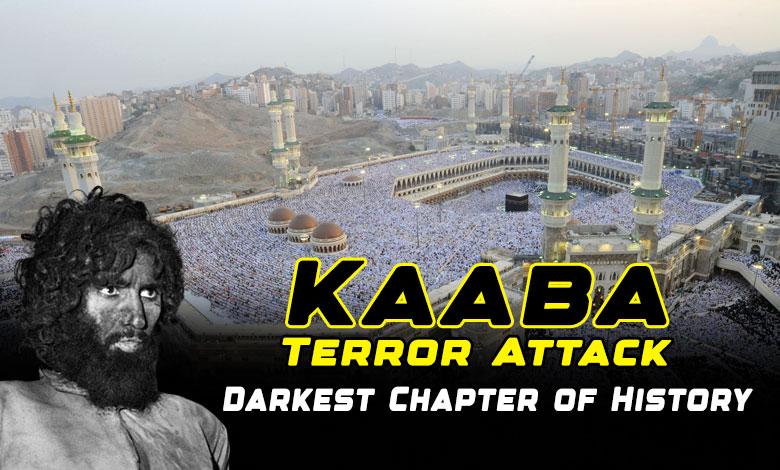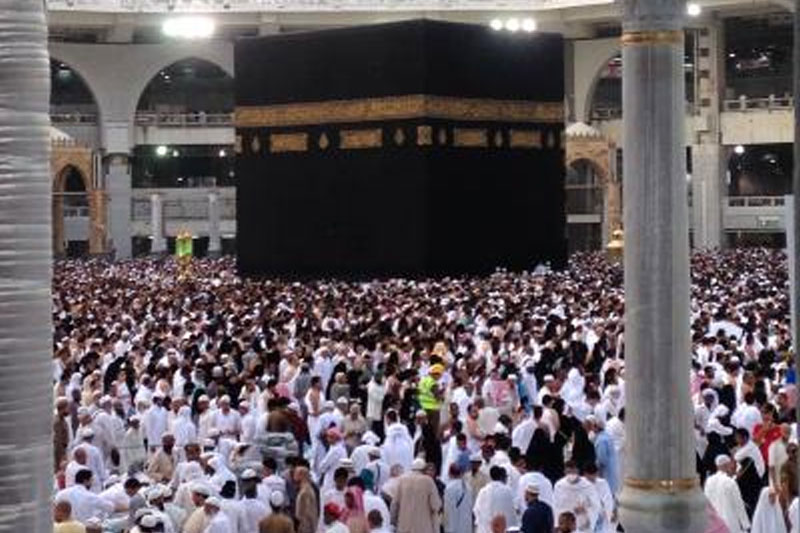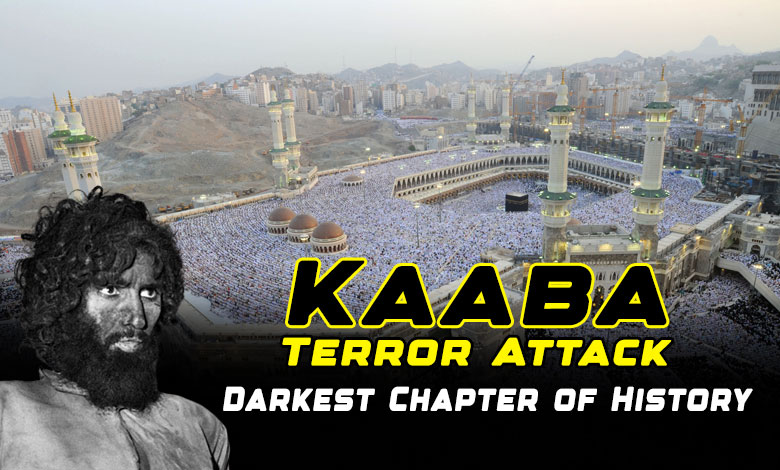The Day Terror Struck Mecca: 100,000 Pilgrims Held Hostage in Kaaba by 200 Terrorists, A Dark Chapter of History

200 armed militants seized the Kaaba in Mecca, holding 100,000 pilgrim’s hostages. Discover the horrifying details of this dark chapter in history, which shook the Muslim world and changed Saudi Arabia forever.
The 1979 attack on the Kaaba, also known as the Grand Mosque Seizure, remains one of the most shocking and tragic events in the history of Islam. The sacred site in Mecca, Saudi Arabia, was assaulted by militants in an unprecedented attack, which sent shockwaves through the Muslim world. Below is an in-depth look at this pivotal moment in history.
Table of Contents
The Attack: Terrorists Take Hostages at the Kaaba
On November 20, 1979, a group of approximately 200 armed militants launched a terrifying assault on the Grand Mosque in Mecca. The attackers, dressed in white robes, infiltrated the mosque, took hostages, and declared their leader, Muhammad Abdullah al-Qahtani, as the Mahdi, the redeemer of Islam.
At the time, over 100,000 worshippers had gathered for the morning Fajr prayers, making the attack particularly devastating. The militants smuggled weapons into the mosque, hidden inside coffins intended for funerals, and once inside, initiated gunfire that caused panic and chaos.

The Challenge of Responding to the Attack
The attack occurred during the Islamic month of Muharram, an important period in the Islamic calendar. The security personnel inside the mosque were unarmed, raising questions about how the militants were able to enter with such weaponry undetected. At the time, key Saudi officials, including the Chief Prince of Saudi Intelligence and Prince Abdullah, the Chief of the Saudi National Guard, were abroad.
The absence of leadership in the country complicated the Saudi authorities’ ability to respond effectively. Moreover, the decision to take military action was a sensitive matter, as the Grand Mosque is considered one of the holiest sites in Islam, and any violent intervention within its confines would be controversial. Religious leaders had to grant permission for the Saudi forces to act.

The 14-Day Operation and Military Intervention
Also Read: The World’s Longest Traffic Jam: 12 Days, 100 Kilometers, and an Unforgettable Delay
The siege lasted for 14 grueling days, during which Saudi Arabia launched an intense military operation to reclaim control of the mosque. Saudi forces were supported by Pakistani and French military personnel.
The operation involved a series of assaults on the mosque’s gates and areas where the militants were entrenched. The terrorists, who were well-equipped and fortified, put up fierce resistance, and casualties mounted on both sides. By the end of the operation, 137 militants had been killed, and 63 were arrested.

The Public Executions of the Insurgents
Following the successful recapture of the mosque, Saudi authorities swiftly acted against the surviving attackers. On January 9, 1980, 63 militants were publicly executed by beheading in several cities across Saudi Arabia. This public display of executions was meant to send a clear message about the government’s stance against extremism and to demonstrate the gravity of the crime they had committed. The executions took place in key locations, including Mecca, Medina, Riyadh, and Dammam.

International Repercussions and Geopolitical Tensions
The attack on the Grand Mosque reverberated far beyond Saudi Arabia’s borders. In the broader Muslim world, the incident was met with shock and condemnation, especially due to the violation of the sanctity of one of Islam’s holiest sites.
In the immediate aftermath, rumors circulated, fueled in part by Iranian revolutionary leader Ayatollah Khomeini, who suggested that the United States and Israel were behind the attack, causing widespread anti-American protests and riots across the Muslim world. The geopolitical landscape was further complicated by the ongoing Iranian Revolution, which added tension to the volatile situation.
Aftermath: A Stricter Approach to Islamic Law in Saudi Arabia
In the wake of the attack, King Khalid bin Abdulaziz implemented stricter policies in Saudi Arabia, particularly in relation to the enforcement of Islamic law. The Saudi monarchy sought to reinforce its legitimacy by granting more power to the ulama, the religious scholars, and promoting a more conservative interpretation of Islam.
This period saw the closure of cinemas, restrictions on the media, and greater gender segregation. The power of the religious police was also expanded, and the country witnessed a wave of cultural conservatism. These measures were aimed at preventing further unrest and reinforcing the monarchy’s religious credentials.

The Lasting Impact on Mecca and Islamic Sites
The 1979 attack on the Kaaba remains a somber chapter in the history of Mecca and Islam. In response to the attack, the Saudi government fortified the security around the Grand Mosque to prevent future assaults.
Today, Mecca remains a symbol of Islamic devotion, and the memories of the tragic event continue to shape policies related to security at sacred Islamic sites. The attack also highlighted the vulnerability of even the most revered places in Islam to extremism and violence, prompting significant changes in the approach to security in religious sites around the world.
The 1979 attack on the Kaaba was an unprecedented event that shook the Muslim world to its core. It served as a stark reminder of the potential for extremism to disrupt the sanctity of sacred spaces and the dangers posed by radical ideologies.
The Saudi government’s response, the military operation to reclaim the Grand Mosque, and the subsequent crackdown on extremism marked a significant turning point in the nation’s history. While the attack remains a dark chapter, it also led to reforms in the security measures surrounding the holy sites of Islam, ensuring that such an assault would never be repeated.

